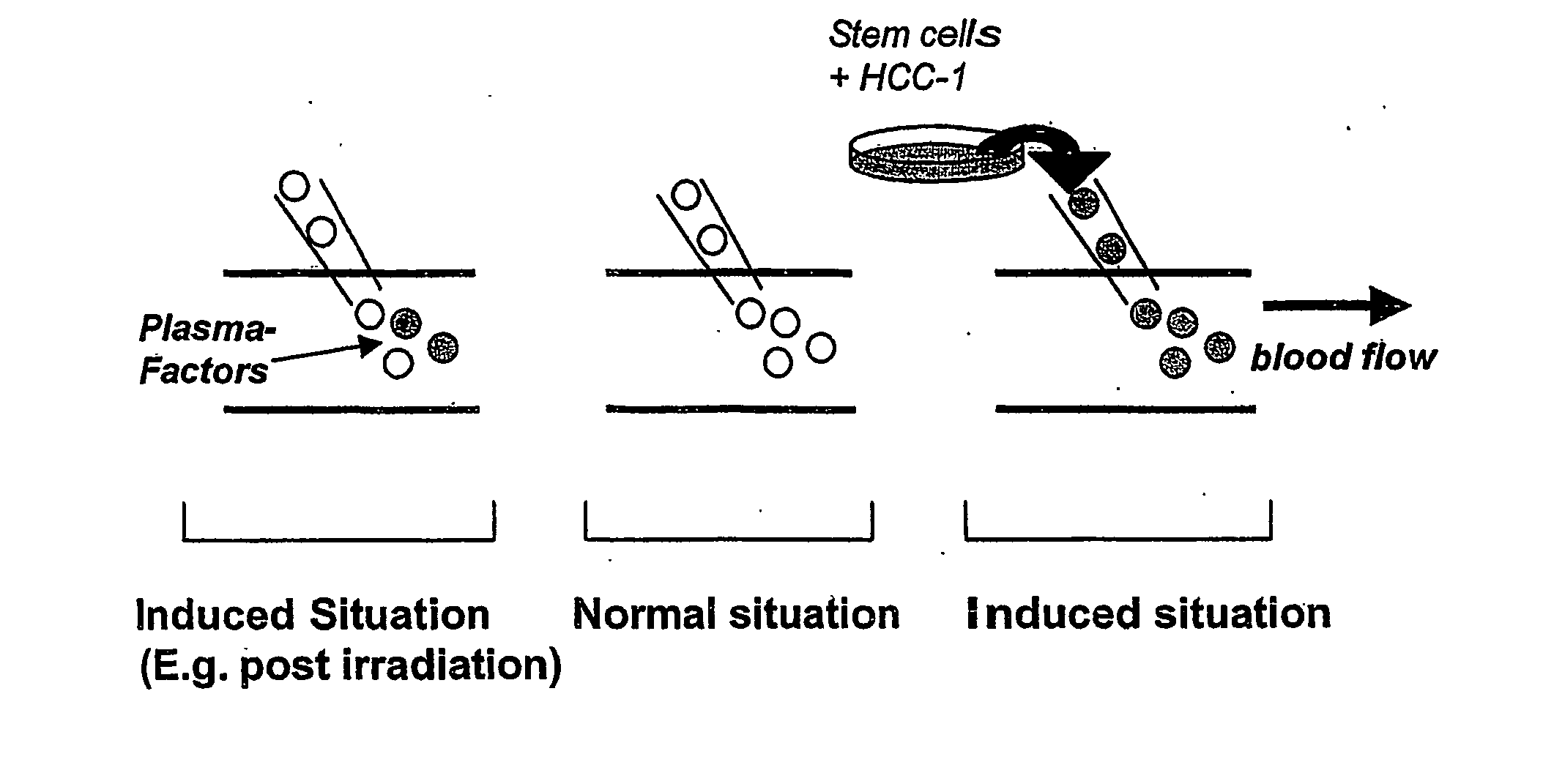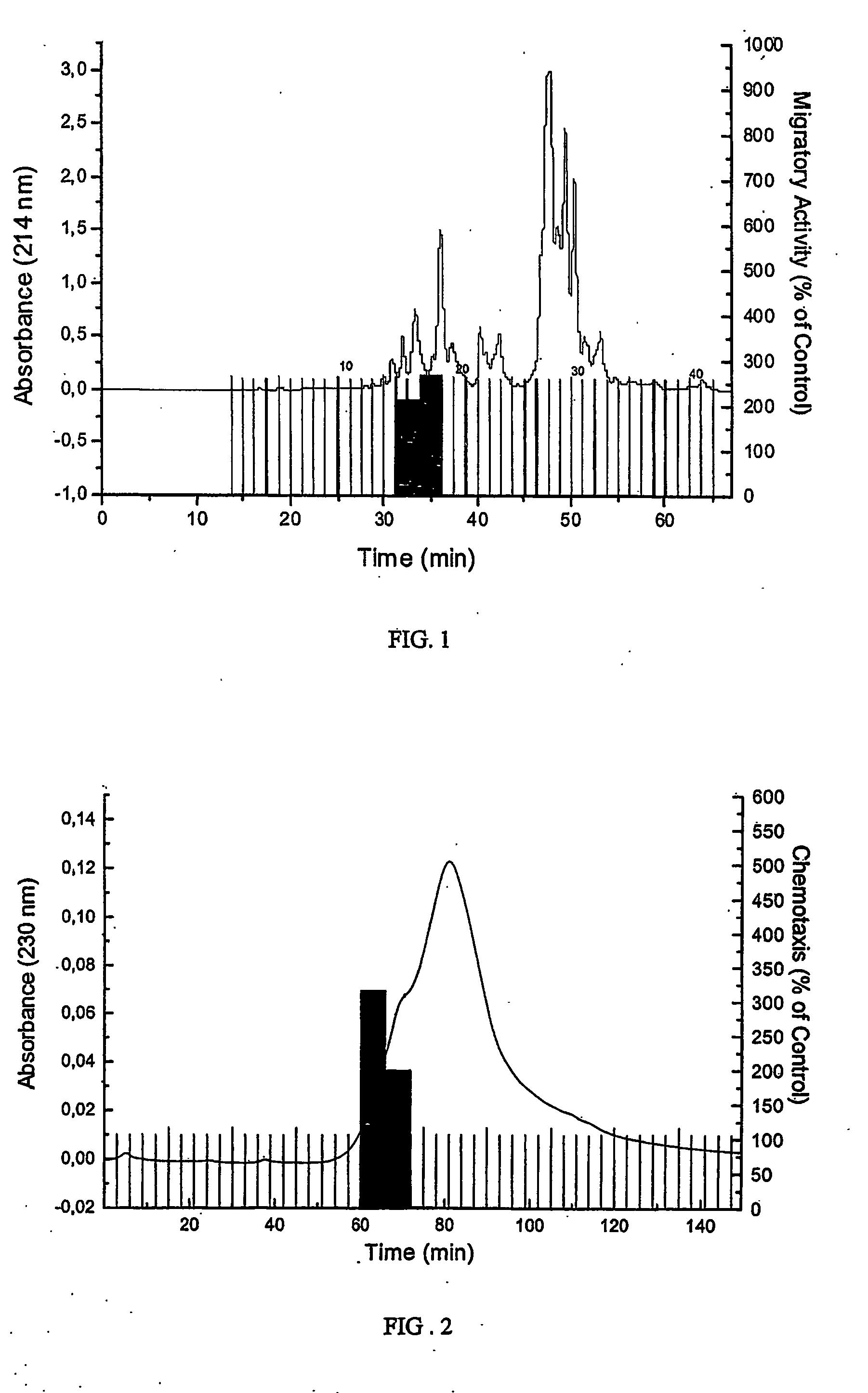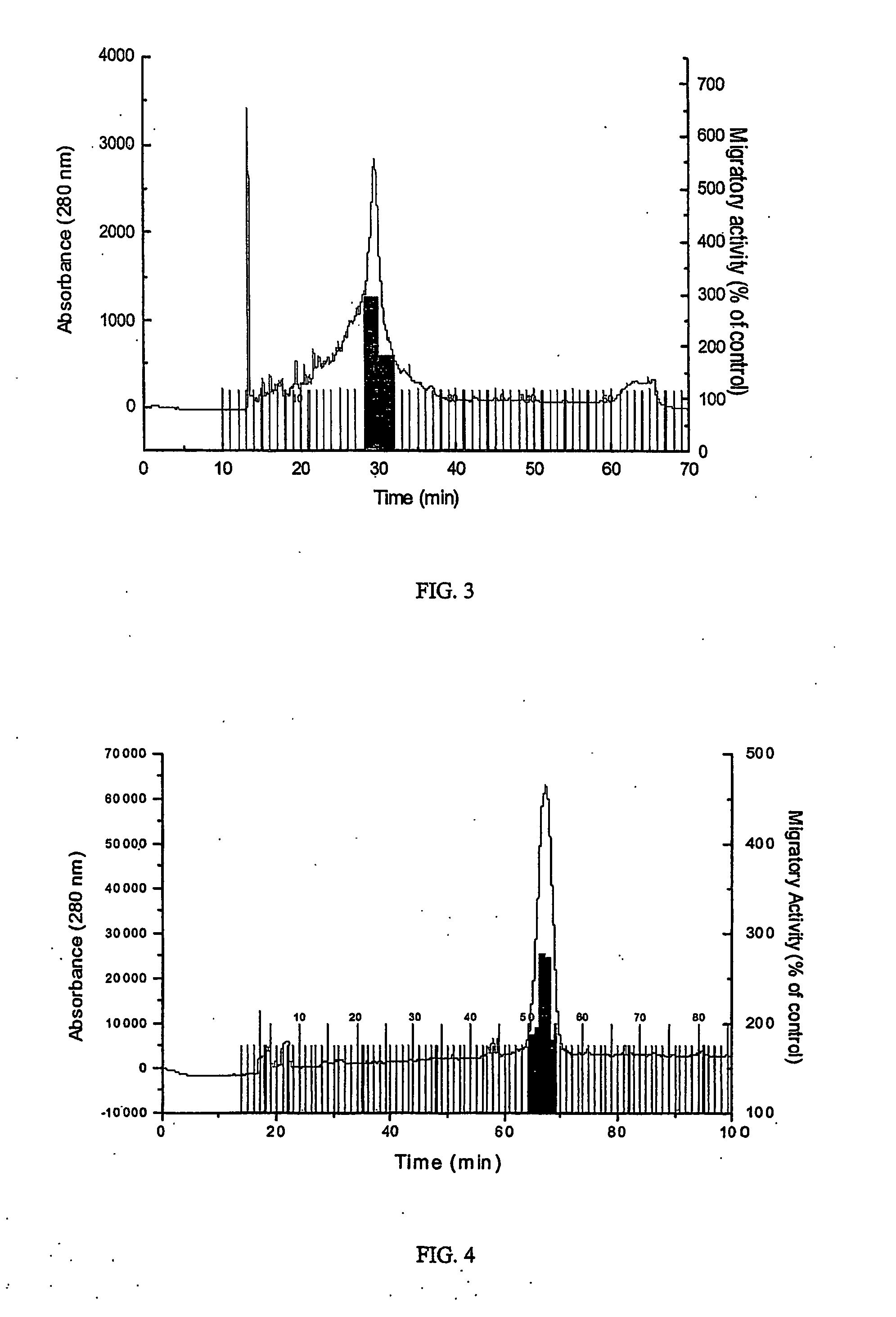Human Chemokine HCC-1 Polypeptides To Improve Stem Cell Transplantation
a technology of stem cell transplantation and human chemokine, which is applied in the direction of peptide sources, extracellular fluid disorders, metabolism disorders, etc., can solve the problems of high graft rejection rate (10-15%), difficult to achieve long-term successful engraftment, and high graft failure rate, so as to improve stem cell engraftment and improve engraftment in the bone marrow
- Summary
- Abstract
- Description
- Claims
- Application Information
AI Technical Summary
Benefits of technology
Problems solved by technology
Method used
Image
Examples
example 1
Identification of Glycosylated HCC-1 as a Stem Cell Migrating Activity
[0045] 900 L of human hemofiltrate (HF) for large scale recovery of plasma peptides were obtained from chemotherapy-treated patients with renal failure. Ultrafilters used for hemofiltration had a specified molecular mass cut-off of 20 kD. The sterile filtrate was immediately cooled to 4° C. and acidified to pH 3 to prevent bacterial growth and proteolysis. For peptide extraction the HF was ultrafiltrated a second time. The filtrate was conditioned to pH 2.7 and applied onto the strong cation exchanger, Fractogel TSK SP 650(M), 100×250 mm (Merck, Darmstadt, Germany) using an Autopilot chromatography system (PerSeptive Biosystems, Wiesbaden, Germany). Bound peptides were eluted using seven buffers with increasing pH resulting in seven pH-pools. The seven buffers were composed as follows: I: 0.1 M citric acid monohydrate, pH 3.6; II: 0.1 M acetic acid +0.1 M sodium acetate, pH 4.5; III: 0.1 M malic acid, pH 5.0; IV:...
example 2
Chemotactic Activity of HCC-1 Molecules to the Murine FDCP-Mix Stem Cell Line
[0047]FIGS. 5 and 6 are showing FDCP-Mix cells which were subjected to in vitro chemotactic assays. Chemotaxis was assessed in 96-transwell chambers (Neuroprobe, Cabin John, MD) by using polyvinylpyrrolidone-free polycarbonate membranes (Nucleopore, Neuroprobe) with 5-μm pores. Four hundred microliters of IMDM medium was added to the bottom of the well, and was supplemented with varying concentrations of HCC-1 molecules. 200 μl of IMDM medium containing 100.000 FDCP-Mix cells were added to the upper wells of the chemotaxis chamber. All assays were carried out in triplicate, and the migrated cells were counted in 4 randomly selected fields at 63-fold magnification after migration for 14 h.
example 3
Modulation of Homing Mechanisms by Preincubation with HCC-1 In Vitro
[0048] Enriched Mononulcear cells, CD34+ progenitor cells from human cord blood, mobilized peripheral blood, or bone marrow are incubated with HCC-1 in concentrations between 100 pM and 10 μM for a time period which is between 5 minutes and 12 hours. FIG. 7 describes the concept of the modulation of homing mechanisms by preincubation with HCC-1.
[0049] After preincubation stem cells are transplanted into the blood flow. In a competitive repopulation model using Ly 5.1 and Ly 5.2 mice it was shown that preincubation of the cells gives an advantage in the engraftment of the bone marrow over cells which were not treated with HCC-1.
PUM
| Property | Measurement | Unit |
|---|---|---|
| Fraction | aaaaa | aaaaa |
| Time | aaaaa | aaaaa |
Abstract
Description
Claims
Application Information
 Login to View More
Login to View More - R&D
- Intellectual Property
- Life Sciences
- Materials
- Tech Scout
- Unparalleled Data Quality
- Higher Quality Content
- 60% Fewer Hallucinations
Browse by: Latest US Patents, China's latest patents, Technical Efficacy Thesaurus, Application Domain, Technology Topic, Popular Technical Reports.
© 2025 PatSnap. All rights reserved.Legal|Privacy policy|Modern Slavery Act Transparency Statement|Sitemap|About US| Contact US: help@patsnap.com



